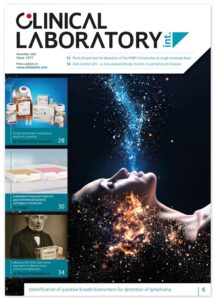Faster, simpler diagnosis for fibromyalgia may be on the horizon
Researchers have developed a reliable way to use a finger-stick blood sample to detect fibromyalgia syndrome, a complicated pain disorder that often is difficult to diagnose.
If it were someday made available to primary care physicians, the test could knock up to five years off of the wait for a diagnosis, researchers predict.
In a pilot study, the scientists used a high-powered and specialized microscope to detect the presence of small molecules in blood-spot samples from patients known to have fibromyalgia.
By ‘training’ the equipment to recognise that molecular pattern, the researchers then showed that the microscope could tell the difference between fibromyalgia and two types of arthritis that share some of the same symptoms.
Though more analysis is needed to identify exactly which molecules are related to development of the disorder itself, the researchers say their pilot data are promising.
‘We’ve got really good evidence of a test that could be an important aid in the diagnosis of fibromyalgia patients,’ said Tony Buffington, professor of veterinary clinical sciences at The Ohio State University and senior author of the study. ‘We would like this to lead to an objective test for primary care doctors to use, which could produce a diagnosis as much as five years before it usually occurs.’
Patients with fibromyalgia are often desperate by the time they receive treatment because of the lengthy process required to make a diagnosis. The main symptoms, persistent pain and fatigue, mimic many other conditions, so physicians tend to rule out other potential causes before diagnosing fibromyalgia. Additional symptoms include disrupted sleep and memory or thought problems. An estimated 5 million American adults have the disorder, according to the National Institute of Arthritis and Musculoskeletal and Skin Diseases.
‘The importance of producing a faster diagnosis cannot be overstated, because patients experience tremendous stress during the diagnostic process. Just getting the diagnosis actually makes patients feel better and lowers costs because of reductions in anxiety,’ said Kevin Hackshaw, associate professor of medicine, division of rheumatology and immunology, at Ohio State’s Wexner Medical Center and lead author of the study.
The technology used in this work is infrared microspectroscopy, which identifies the biochemical content of a blood sample based on where peaks of molecules appear in the infrared spectrum. The technology offers hints at the molecules present in the samples based on how molecular bonds vibrate when they are struck by light.
The spectroscopy works on dried blood, so just a few drops from a finger stick produce enough blood to run this test.
Researchers first obtained blood samples from patients diagnosed with fibromyalgia (14), rheumatoid arthritis (15) and osteoarthritis (12). These other conditions were chosen for comparison because they produce similar symptoms as fibromyalgia, but are easier to diagnose.
The scientists analysed each sample with the infrared microspectroscopy to identify the molecular patterns associated with each disease. This functioned as a ‘training’ phase of the study.
When the researchers then entered blinded blood samples into the same machinery, each condition was accurately identified based on its molecular patterns.
‘It separated them completely, with no misclassifications,’ Buffington said. ‘That’s very important. It never mistook a patient with fibromyalgia for a patient with arthritis. Clearly we need more numbers, but this showed the technique is quite effective.’
The researchers also analyzed some of the potential chemicals that could someday function as biomarkers in the fibromyalgia blood samples, but further studies are needed to identify the molecules responsible for the spectral patterns, he said.
EurekAlert


